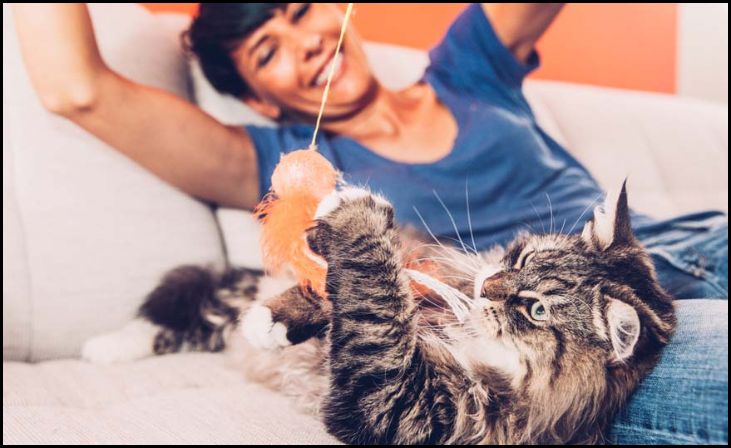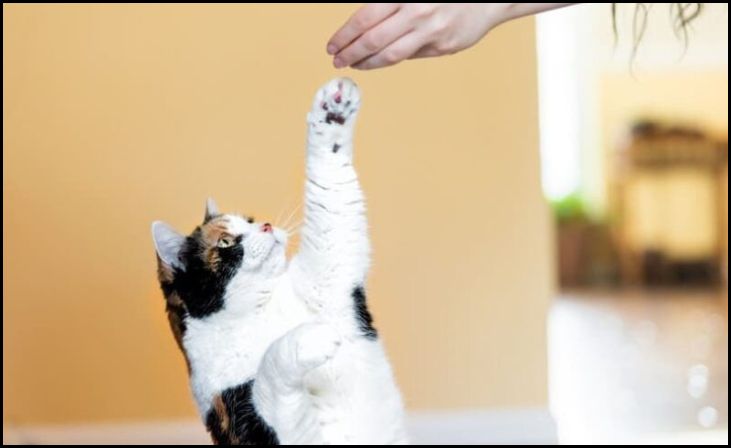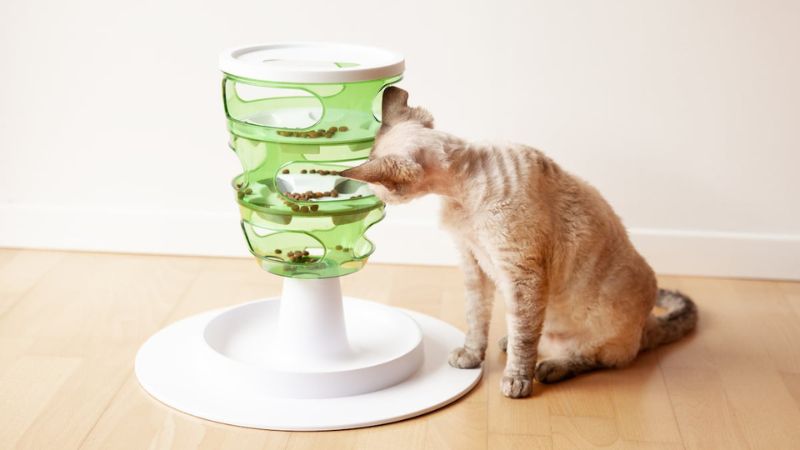Cats are known for their independent nature and often seem content with lounging around the house. However, just like humans, cats need regular physical and mental stimulation to stay healthy and happy. Here are eight tips to keep your feline friend engaged and active, ensuring they live a long and fulfilling life.
1. Interactive Playtime

Interactive playtime is essential for keeping your cat physically active and mentally stimulated. Use toys like feather wands, laser pointers, and interactive balls to engage your cat in play. These toys mimic the movements of prey, tapping into your cat’s natural hunting instincts. Schedule at least two 15-minute play sessions each day to keep your cat active.
Interactive toys are particularly effective because they require your cat to think and react, which provides both physical exercise and mental stimulation. Rotate the toys regularly to keep your cat interested and challenged. The key is to make these play sessions as engaging and varied as possible.
2. Puzzle Feeders
Puzzle feeders are an excellent way to combine mealtime with mental stimulation. These feeders require your cat to solve a puzzle to access their food, which can slow down eating and provide a fun challenge. There are many types of puzzle feeders available, from simple maze bowls to more complex designs that require manipulation.
Introducing a puzzle feeder can help prevent obesity by encouraging your cat to eat more slowly and thoughtfully. It also stimulates their problem-solving skills and keeps them occupied, reducing the likelihood of boredom-related behaviors like scratching furniture or excessive grooming.
3. Cat Trees and Scratching Posts
Cats love to climb and scratch, so providing them with a variety of cat trees and scratching posts is crucial. Cat trees offer multiple levels for climbing, perching, and observing their surroundings, which can satisfy your cat’s natural instincts. Scratching posts allow your cat to sharpen their claws, stretch their muscles, and mark their territory.
Place these items in areas where your cat likes to spend time, and consider placing a scratching post near furniture they are prone to scratch. To encourage use, sprinkle some catnip on the posts or place treats on different levels of the cat tree. Regular use of these items will help keep your cat physically active and mentally engaged.
4. Training and Tricks

Training your cat to perform tricks is a fantastic way to keep them mentally stimulated. Contrary to popular belief, cats can be trained using positive reinforcement techniques similar to those used with dogs. Use treats, praise, and clicker training to teach your cat commands like “sit,” “high five,” and “fetch.”
Start with simple tricks and gradually increase the difficulty as your cat becomes more comfortable with the process. Training sessions should be short and fun, lasting no more than five to ten minutes. Not only does training provide mental stimulation, but it also strengthens the bond between you and your cat.
5. Window Perches and Outdoor Enclosures
Cats are naturally curious creatures, and providing them with opportunities to observe the outdoors can be very stimulating. Window perches give your cat a comfortable spot to watch birds, squirrels, and other outdoor activities. Make sure the perch is securely attached and has a soft, cushioned surface.
If you have the space and resources, consider building an outdoor enclosure, often called a “catio.” These enclosures allow your cat to experience the sights, sounds, and smells of the outdoors in a safe, controlled environment. Whether it’s a simple window box or a more elaborate structure, a catio can provide endless entertainment and stimulation for your feline friend.
6. Rotate Toys and Activities
Cats can quickly become bored with the same toys and activities. To keep their interest, rotate their toys and introduce new activities regularly. You don’t have to buy new toys constantly; simply rotating the ones you have can make them seem new and exciting again.
Introduce new textures, shapes, and sounds to keep your cat intrigued. For example, crinkly tunnels, plush mice, and electronic toys that move unpredictably can all provide different types of stimulation. Observing which toys your cat prefers can help you choose future activities that they will enjoy.
7. Social Interaction
Social interaction is vital for a cat’s mental well-being. Spend quality time with your cat each day, petting, cuddling, and talking to them. This interaction helps build a strong bond and provides emotional stimulation. If you have a single cat, consider adopting another one for companionship, as long as you can manage the introduction process properly.
Cats are social animals and can benefit greatly from having a feline friend. They can play together, groom each other, and provide mutual companionship. However, it’s important to introduce a new cat slowly and carefully to ensure a smooth transition and avoid territorial issues.
8. Sensory Enrichment

Sensory enrichment involves stimulating your cat’s senses through various activities and objects. This can include playing music designed for cats, using cat-safe essential oils, or providing different textures for them to explore. Scents like catnip, silver vine, and valerian root can be particularly appealing to cats.
You can also create a sensory-rich environment by placing bird feeders outside windows, introducing fish tanks (with secure lids), and using interactive apps on tablets designed for cats. These activities can keep your cat engaged and mentally stimulated, helping to prevent boredom and associated behavioral issues.
Conclusion
Keeping your cat exercised and mentally stimulated is crucial for their overall health and happiness. By incorporating a variety of activities, toys, and interactions into their daily routine, you can ensure they remain active, engaged, and content. Remember, a stimulated cat is a happy cat, and a happy cat makes for a harmonious home. Try out these tips and observe which ones your cat enjoys the most, tailoring their environment and routine to suit their individual needs and preferences.

